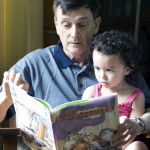 Lima Bear® Press has a very straightforward mission: to publish children’s stories that are, engaging, imaginative, and humorous while each carries an important life message such as tolerance, honesty, forgiveness, courage, friendship, and teamwork.
Lima Bear® Press has a very straightforward mission: to publish children’s stories that are, engaging, imaginative, and humorous while each carries an important life message such as tolerance, honesty, forgiveness, courage, friendship, and teamwork.
The Mysteries of Your Children Revealed Through Vacation Time

© Wavebreakmediamicro | Dreamstime.com
Learn the mysteries of your children while on vacation
In the States we call it a vacation. Overseas, it is called a holiday. No matter what you call it, the idea is the same. You and your family leave your house and all your cares behind and spend uninterrupted time together. Where you decide to go makes little difference. They length of time that you stay away does not much matter either. What does matter is that you have you have some time to really focus on your family. The benefits to this uninterrupted time can be invaluable.
Time away with your family can provide an insight you otherwise might not have
Here are a few of the things that you may learn about your children with some time away from home:
*** What is going in at your child’s school
*** What is going on with your child’s friends…ie. what kind of kids are their friends?
*** What your child’s idiosyncrasies are
*** What your child’s interests are
*** How your child solves problems
*** What your child’s everyday temperament is
*** What problems your child might be having
How a vacation can reveal the secrets of your child
It is the quiet, un-stressful, un-scheduled time together that provides the magic. After a few days, the conversation starts flowing. Stories from the year are revealed. Issues come up. Worries are admitted. Desires and dreams are uncovered. Who knows? A problem or two maybe solved. Before the end of your trip, family bonding has occurred.
As summer rolls around the corner, make it a point to be present in your vacation and relaxed enough to take it all in. The real trick is to try to find a way to create “vacation time” at home from time to time.
Do you have experience with the phenomena of secrets revealed during family vacation? Share your experience with us.
Why Do Bullys Bully? Could They Simply Want Love, Attention, Power?
 When bullying affects your child
When bullying affects your child
When your child comes home from school in tears because another child was mean to her, the first thing you probably feel is anger and a need for retaliation to make the bullying stop. After reflection, a call to the school or a teacher might be a better option. Wouldn’t it be great if you could determine the reason why a bully is a bully? Would you have a better chance of stopping the behavior?
The definition of a bully
Bullying can be defined in many ways. One way that is pretty well universally understood is that bullying is …“purposeful attempts to control another person through verbal abuse – which can be in tone of voice or in content such as teasing or threats – exclusion, or physical bullying or violence.” (bullyingstatistics.org)
In our Lima Bear story, Bully Bean, the character Bully Bean, that Mean ‘ole Bean, finds himself in trouble and need of help. We do not know Bully Bean’s backstory or why he feels the need to bully, but Lima Bear’s kindness to him when he is in mortal danger turns Bully Bean around. Kindness was shown to Bully Bean and he no longer was a bully but a helper.
The reasons why a bully is a bully are unclear but we have a few ideas of the causes.
Some experts believe that a bully has low self-esteem and is in need of love himself. Accordingly, it would make sense that “children who experience social rejection themselves are more likely to “pass it on” to others. Children who experience academic failure are also more likely to bully others.” (bullying statistics.org)
A Webmd.com article entitled, What Motivates Kids Who Are Bullies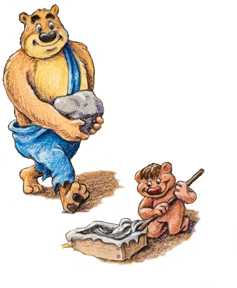 , that cites a Netherland’s 2010 study, suggests that bullies have fine social skills and high esteem but wish to please the popular kids in school by belittling those they deem undesirable. In other words, bullies are looking for attention and to be noticed.
, that cites a Netherland’s 2010 study, suggests that bullies have fine social skills and high esteem but wish to please the popular kids in school by belittling those they deem undesirable. In other words, bullies are looking for attention and to be noticed.
Here are some interesting views from a few experts on this theory:
“Bullies aren’t looking to be loved, but they are looking to be noticed,” says study researcher Rene Veenstra, PhD, who is a professor of sociology at Holland’s University of Groningen. “They are often perceived as very popular.”
University of Wisconsin professor of educational psychology Amy Bellmore, PhD, in the same Webmd.com article says that this research “flies in the face of the generally held idea that kids who pick on other kids have poor social skills and low self-esteem,” she says. Even at this young age, bullies tend to be aware of the social hierarchy within the class and are seeking the admiration of specific people.”
Sandra Graham, PhD, who is a professor of psychological studies at University of California, Los Angeles, says the recognition that bullies are often popular should have an impact on interventions aimed at reducing bullying. The thought had been that if we made bullies feel better about themselves they wouldn’t pick on other kids,” she says. “But there is not much evidence that bullies suffer from low self-esteem.”
A bully can have great self-esteem or bad self-esteem and still need love
It might seem confusing a first glance to learn that all bullies are not always the social outcast, low self-esteem kids we once though they were. Maybe it is not so confusing after all. Maybe we simply need to ask a new question. Specifically, what does the outcast and the popular kids have in common that make them feel the need to pick on another kid? The answer most probably includes a lack of attention (at home or school) or lack of love and probably a need for power at any cost. Most likely, too, is an undeniable lack of conscience or ability to discern right from wrong.
What is very interesting is that the most successful bully prevention interventions, according to the Netherlands study cited above, in affecting a bully’s behavior are the programs that help bullies deal with their anger. Also, the programs that are directed to the classroom as a whole instead of focused on the bully or the victim specifically were found to be the best behavior changers. When the reason of bully’s brutish behavior is exposed through such programs, he can recognize it, cope and change the behavior. LifeScience.com reveals that bullies do want to change their behavior. Those interviewed revealed they had a low opinion of themselves. In Bully Bean, Bully Bean’s behavior was changed when his perception changed because he was showed kindness. Perhaps all bullies have a desire to change their behavior if only to improve their own view of themselves.
What has been your experience with bullies. Do you think they bully because the lack self-esteem or love?
Coloring Pages of Scenes from The Labyrinth, Easy Downloadable PDFs
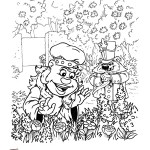 We just added more downloadable coloring pages to the Lima Bear Press website. The pages are taken directly from our latest title, The Labyrinth. The Labyrinth’s illustrations are super colorful and perfect for spring. You could use every bright color in your crayola box.
We just added more downloadable coloring pages to the Lima Bear Press website. The pages are taken directly from our latest title, The Labyrinth. The Labyrinth’s illustrations are super colorful and perfect for spring. You could use every bright color in your crayola box.
Compare the color scheme your child comes up with to the color scheme our illustrator, Len DiSalvo chose. Ask you child why Mr DiSalvo chose the colors he did. Was it the expression on the character’s faces that affected his choice of colors? Does the current season have an effect on the colors picked? How about your child’s mood? Use the downloadable coloring pages as a family activity. Download a couple of coloring pages and have each member of the family color the page. Later, compare the completed pages.
Enjoy and visit us for more downloadable coloring pages!
Caves Are a Magical and Spooky Place at the Same Time | Perfect For Teaching Children About Nature
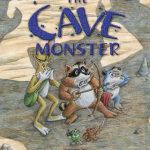 A cave is magical and spooky place
A cave is magical and spooky place
In The Cave Monster, readers are introduced to a magical wonder of nature that becomes its own character in the book. I am talking about caves. In the Cave Monster L. Joe Bean has been captured by the Cave Monster and Whistle-Toe, the rabbit, begs Lima Bear to help rescue him. The friends are scared of the cave monster and the cave but they want to help their friend. They enter the cave.
What is a cave and how does it form?
Wikipedia tells us that a cave “is a hollow place in the ground especially a natural underground space large enough for a human to enter. Caves form naturally by the weathering of rock and often extend deep underground.” Speleology is the scientific study of caves and their surrounding environments. We love words and we think the word Speleology (spa·le·ol·o·gy) pretty cool. There is so much to learn about caves.
Cool cave facts
Here are some other interesting facts about caves courtesy of Sciencekids.co.nz:
 ** Stalactites, (which are beautifully illustrated in the Cave Monster,) are created by the continuous dripping of mineral rich water, which little by little leaves mineral deposits on the ceiling as the minerals harden.
** Stalactites, (which are beautifully illustrated in the Cave Monster,) are created by the continuous dripping of mineral rich water, which little by little leaves mineral deposits on the ceiling as the minerals harden.
** Stalagmites are created as the mineral rich water droplets fall to the cave floor leaving mineral deposits that grow to become pillar-like formations.
** Stalactites and stalagmites can eventually join from floor-to-ceiling, however they grow very slowly, around an inch every 100 years.
**The deepest known cave is Voronya Cave in Georgia, at 2,197 m (7,208 ft).
Why we are fascinated with caves
Cave are unquestioningly dark. Dark can mean spooky. You do not know what is behind every turn in a cave. There is no light to see your way out. At the same time caves are also super interesting. They are different from the outside world. They are cool and calm and decorated with rock formations and truly show the power of nature. Plus, living creatures do call caves their homes. Can you or your child guess what animals are most commonly found in caves? Nope, it is not cave monsters but spiders, salamanders, bats and fish.
Visit a cave near you and send us a picture
Are you tempted to visit a cave? We found a cool site where you can type in your state and locate a cave near you. It is called, you might have guessed it, CaveSearch.com. If you do visit a cave, send along your pictures and we will post them on our site and Facebook page! We’ll send out 2 copies of The Cave Monster to participants at random. Send your pictures to [email protected].
Something That Makes You Different Can Be A Good Thing | Help Your Child To Embrace What Makes HIm Different
 Kids do not want to be different
Kids do not want to be different
The last thing a kid wants to be is different. To be different means attention and it is not always good attention. You could be a different in a whole lot ways. You could have a lisp, like Cindy Brady had. You could be the last one picked for the sports team. You could always get the lowest grade in the class or the highest grade for that matter. You could stay back a year instead of moving forward with your classmates or you could be asked to skip a grade. Whatever the difference, we are programmed to believe that different is bad. Wouldn’t it be great to convince our kids and for them to actually believe that different is good?
How a difference can be a good thing
In the Lima Bear Press series book, How Back-Back Got His Name, one of Lima Bear’s friends, Plumpton, has an emergency and sends for Lima Bear for help. Plumpton is an opossum, you see, and somehow his back was missing. When all his buddies come to his aid to help him find his back, they all find themselves in danger from the kids playing in the Big Meadow. Plumton must use his special skill, his difference of playing dead, to get past the kids and save his friends. Plumpton’s difference is what enables him to save his friends!
Reading a story like How Back-Back Got His Name with your child is a great way to illustrate how a difference can be an advantage, something can be embraced, even valued! Share what made you different when you were a kid.
Reading Interactively With Your Child by Isolating Specific Words in the Story
 We have suggested ways for you to read interactively with your child: Here are a few more ideas. Have you ever noticed when reading a Lima Bear Story, like The Labyrinth, that certain words are written in a different way from the rest of the words? The reason for this is to draw attention to the word, usually a more challenging word, so that the child will notice it and ask about it. You can use these special words as an opportunity to “extend the learning.”
We have suggested ways for you to read interactively with your child: Here are a few more ideas. Have you ever noticed when reading a Lima Bear Story, like The Labyrinth, that certain words are written in a different way from the rest of the words? The reason for this is to draw attention to the word, usually a more challenging word, so that the child will notice it and ask about it. You can use these special words as an opportunity to “extend the learning.”
**First read the book all the way through with your child
**Go through the book again but this time, have your child point out the words that different from the rest.
**Ask your child to identify how the word is different:
**Is the word bigger or smaller?
**Is it a different color?
**Ask your child to guess why she thinks the word is different
** Have your child say the special words in the story in the way he thinks the author intended for them to be read.
**Talk about how the words could be said differently to express different emotions
**Ask your child to try come up with different word that could be used that would have a similar meaning
In The Labyrinth, some of the special words are “cheered,” “twists and turns,” and “glowed.” You can see what we mean by “special words” from this small sample. They are bit more descriptive, a bit more challenging, a bit more cool. Please share any ways that you have discovered to “extend the learning” as you read interactively with your child!
Encourage Your Children to Act With Courage Through The Use of Children’s Books
 Can an illustrated children’s book help you to encourage your child to be courageous?
Can an illustrated children’s book help you to encourage your child to be courageous?
We think so. That is one of the reasons that we wrote and continue to write the Lima Bear Series. You see, Lima Bear, one of our major characters, is a very brave bean…smart, too. His adventures are always exciting but they also exhibit Lima Bear’s bravery in tough situations. Take, for example, Lima Bear’s action in the Lima Bear Series book, The Cave Monster.
In The Cave Monster story, Lima Bear comfortably waits in his home for his cousin, L. Joe Bean to visit. He learns from his friends Whistle-Toe, Maskamal, and Back-Back that L. Joe Bean has been captured by the cave monster. All the friends are scared. They don’t WANT to go to the cave where the cave monster is keeping L. Joe Bean but they must go. We learn that courage is not always a comfortable feeling and that courageous people are fearful but they do not let that fear keep them from action.
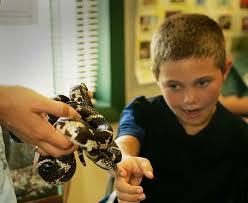 …”children like books about values and ethical dilemmas…these questions are at the heart of what makes life meaningful”
…”children like books about values and ethical dilemmas…these questions are at the heart of what makes life meaningful”
In a post titled, How to Raise a Child of Character, Dr. Laura Markham, of ahaparenting.com believes that books can help you encourage your child to act with courage. She says in this article, “Most young children like books that talk about values and ethical dilemmas. That’s because these questions are at the heart of what makes life meaningful, which is a primary question for children beginning at about the same age — the preschool years.
“at the heart of what makes life meaningful”- What a lovely sentiment that is. We agree.
How to start a conversation about courage using a children book such as The Cave Monster
Books like The Cave Monster give parents the perfect vehicle to start a conversation about a subject children desire to discuss. In The Cave Monster specifically, a way to begin the conversation about courage could start with first reading the book with your child. After reading the book you could sit with your child and (using the ideas from “extend the learning” pages found in the back of each Lima Bear Series book) you could ask the following questions:
**What do you see when I say the word “monster”?
**How does the author let you know that the characters are afraid of the Cave Monster?
**Would you be afraid of the Cave Monster? Why or why not?
**Have you ever been afraid? How did you handle that feeling?
Reading a children’s book and starting a conversation about courage could be an important step in imparting your values to your children and fostering great habits in your child. Have you had a similar experience with your child? Are any of the books you like to read together good to promote courageous behavior?
Coloring Pages of Scenes from Lima Bear Books, Easy Downloadable PDFs
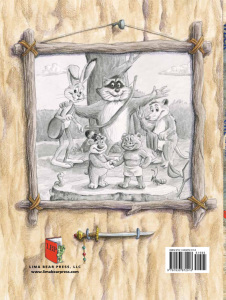 We just added a few downloadable coloring pages to the Lima Bear Press website. The pages are taken directly from our latest title, Bully Bean. While the snow is piling up outside, stay warm and busy inside while coloring a page from the book.
We just added a few downloadable coloring pages to the Lima Bear Press website. The pages are taken directly from our latest title, Bully Bean. While the snow is piling up outside, stay warm and busy inside while coloring a page from the book.
Compare the color scheme your child comes up with to the color scheme our illustrator, Len DiSalvo chose. Ask you child why he chose the colors he did. Was it the expression on the characters faces that affected his choice of colors? Does the current season have an effect on the colors picked? How about your child’s mood?
Enjoy and visit us for more downloadable coloring pages!
Creating an Original Story With Your Child Can Be the Perfect Cure for the Winter Blues

Story-telling with your child can be the perfect cure for the winter blues
This winter try something different with your children to cure the winter blues. Instead of simply reading to them from the books on their shelf, why not come up with your own story? Storytelling is a time-honored tradition, handed down from generation to generation. In some cases, handed-down stories turn into beautifully written-down tales, decades later as in case of the Lima Bear Stories.
You too, can create stories either on your own or with the help of your family. The result will not only be entertaining but a source of family memories as palpable as any family vacation photo album.
How to get started in creating your own family stories
To get started in creating your family story-telling memories keep these tips in mind:
- Do not be intimidated; anything you have to share is going to be interesting to your children.
- Use what is important to you. If you are super clean, for example, create a character who learns the hard way why cleaning up is important.
- Use humor. Goofy=Happy Children
- Create catchy character names. Catchy names make the story come alive and easily remembered.
 Have the family join in with pieces of the story
Have the family join in with pieces of the story
Another way to create terrific tales is to let the story unravel by having your family add the content along with you. For example, why not turn the television off on a cold winter’s night and simply start a story much like the old children’s game “whisper down the lane?” Start with a funny scene using material that is obvious to you. Let each family member add to the story and take the story over for a while.
Enjoy as you witness the creative juices flowing. Each family member gets a chance to add and embellish until finally a completed story is created. After you get to the end of the story see if family members can repeat the story back. Did the story change? Try the story again using the new embellishments to see if the changes may become permanent changes.
Examples of story beginnings to get you started
One of the hardest tasks in creating any story is coming up with a beginning to the story. Below are some ideas of story-starters to get you on your story-telling way:
- Is a holiday near or around a corner? Make your story a holiday tale.
- Put a twist on a famous fairy tale. If the writers of Shrek and Enchanted can do it, you can too!
- Use a topic from the news. A young hero story, for example.
- A famous writer instructor once said “write what you know,” in this case, “tell what you know.” Use what interests you: a football story, a yoga story, a story about your favorite animal, etc.
- Tell a story based, loosely or closely on a relative who your children may have never met – what a wonderful way to teach them about someone special who is actually a part of them.
No matter what you decided to base your story on or how you choose to create it, remember that by storytelling you are sharing not only time with your child but a part of yourself. Enjoy making your very own story-telling memories! Let us know your successes!
What Can You Do If Your Child Is Being Bullied | Could a Brady Bunch Episode Hold Some Answers

Bullying was even covered on the Brady Bunch
It is one thing to determine that your child is being bullied. it is another thing to know what to do about it so that you can help. Although your inclination might be to confront the bully or the bully’s parents (who can forget the Brady Bunch “bully episode” when Buddy Hinton was teasing little Cindy…”Baby talk baby talk, it’s a wonder you can walk.” ) help might best come in another form.
What to do if you suspect your child is being bullied
We can look to Dr. Borba again for some advice for what to do if you suspect your child is being bullied. Dr. Borba has a more comprehensive list at the link but some of our favorite tips include the following:
** Ask direct questions of your child.
For example, if your child comes home with a torn jacket, ask specifically how the jacket was torn. Watch carefully for your child’s body language as he answers this question. If your child is losing weight, ask him if he is eating the lunch that he brought to school or if something was amiss with his school lunch account. Make sure you get an answer.
** Get the school’s bullying policy from their website online.
Thankfully schools are more aware of bullying and have policies in place to thwart it.
** Listen to your child’s friends for information
It is fascinating what a parent can find out when driving kids. For some reason, kids think that the parent driving the car has lost his hearing! You can glean information this way or simply ask the friend if anything is going on at school.
** Talk to the parents of your child’s friends
If you can not get information from your child’s friend, a friend’s parent might have heard something that would be useful.
** Ask your child which teacher or counselor at school they trust at school. Contact that person for advice.
** Most importantly, seek the help of a health care professional to help your child and come up with a plan to address it with the administration at your child’s school. Start with your pediatrician’s recommendations.
Brady Bunch bully episode has a lesson similar to Bully Bean
 In the Brady Bunch bullying episode, Cindy’s brother Peter defends Cindy against Buddy, the bully, and gets himself a black eye. Peter’s father, Mike, says for Peter to reason with the bully, first, and then it is ok to defend himself as a last resort. Today, the advice would most likely be to let the school handle it before it becomes physical. Nonetheless, at the next confrontation, Peter is forced to defend himself and lands a right hook on Buddy’s jaw. The punch gives Buddy a lisp of his own..the exact same quirk that Buddy used to tease Cindy. When Cindy, who was watching the fight, starts to then tease Buddy, Peter quickly scolds her and the group gathered to watch ‘the fight.” It is never ok to tease.
In the Brady Bunch bullying episode, Cindy’s brother Peter defends Cindy against Buddy, the bully, and gets himself a black eye. Peter’s father, Mike, says for Peter to reason with the bully, first, and then it is ok to defend himself as a last resort. Today, the advice would most likely be to let the school handle it before it becomes physical. Nonetheless, at the next confrontation, Peter is forced to defend himself and lands a right hook on Buddy’s jaw. The punch gives Buddy a lisp of his own..the exact same quirk that Buddy used to tease Cindy. When Cindy, who was watching the fight, starts to then tease Buddy, Peter quickly scolds her and the group gathered to watch ‘the fight.” It is never ok to tease.
 Surprisingly, Buddy ends up at the Brady residence to apologize to Peter and Cindy and to ask Cindy if he can borrow her tongue twister books to help with his new lisp. I am reminded of Bully Bean who after mercilessly torturing Lima Bear, needs Lima Bear’s help when he gets stuck. Just like Cindy, Lima Bear is there to help the bully and is bullied no more.
Surprisingly, Buddy ends up at the Brady residence to apologize to Peter and Cindy and to ask Cindy if he can borrow her tongue twister books to help with his new lisp. I am reminded of Bully Bean who after mercilessly torturing Lima Bear, needs Lima Bear’s help when he gets stuck. Just like Cindy, Lima Bear is there to help the bully and is bullied no more.